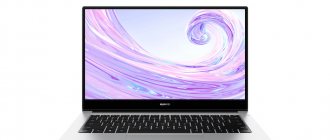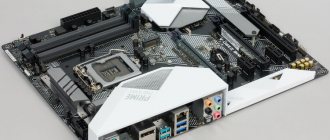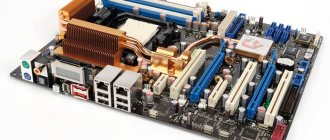The model of the graphics chip, the amount of video memory, the bus bandwidth - it would seem that you only need to decide on the main criteria, and the question of choosing a video card is closed. However, even with a superficial acquaintance with the offerings on the market, it becomes clear: a huge assortment is available to the buyer. It is so huge that the cost of two models with similar characteristics can differ significantly.
In fact, the difference between them is much more significant. Each product is designed to suit a specific level of needs and budget. Therefore, before making a responsible purchase, you need to understand what exactly numerous manufacturers offer and which of them are trustworthy.
Reference sample
Trends in the video card market are set by two competitors: Nvidia and Advanced Micro Devices. First, their new products are shown to a wide audience. This happens at specialized presentations, where representatives of each company demonstrate the capabilities and potential of a fresh graphics chip of their own production.
To do this, they use “reference video cards” - standard (initial) samples of the product. Based on them, the public is simply introduced to the capabilities of the new chip. Therefore, there can be no talk of any unnecessary costs such as advanced cooling, quietly running coolers or serious overclocking.
Of course, reference models of video cards are produced in limited editions. Especially for such events. Some of them still go on sale, but they are of interest either to avid collectors or to those who want to try out the new product with their own hands and be among the first on the planet.
What do vendors offer?
You need to understand that the possibilities of partner companies are not limitless. In their products, the main thing remains unchanged - the architecture of the video card. The design of the video chip or, for example, the number of CUDA cores in all non-reference samples is no different from standard analogues.
Typically, partner companies work on several aspects:
- The clock speed of the GPU and memory, which directly affects the performance of the video card.
- Power circuits, the quantity and quality of which affect the overclocking potential of the product.
- Cooling system that protects the video card from overheating. The quality of cooling is reflected both in the maximum permissible overclocking level and in its operating noise.
- Exterior design.
Even these changes make the modified sample a much more interesting option to buy. This is what distinguishes them from standard models produced by Nvidia Corporation and AMD.
Vendors also often enter into contracts with universal electronics assembly companies, like Foxconn. After all, having your own production line is not a cheap privilege.
Gaming system
The “laptop topic” arose during a conversation with Alexey, the owner of the DDD world. While discussing games, we started talking about laptops, where the monsters of this article surfaced. So, thank you, Alexey, for the unexpected topic!
Contrary to the opinion of people far from computers, the heaviest consumers of resources are modern games - not all, but if the graphics are close to cinematic and the action takes place in real time, then certainly. A “study laptop” does not need a fast processor and discrete graphics card.
What do I mean by gaming laptop? This is a portable computer that can play a wide variety of games. If your ultimate dream is “VKontakte games” or Minecraft, you can even get by with built-in graphics. We are talking specifically about the leading representatives of the industry: Crysis, Metro, Fallout, Doom and so on.
What desktop computer (system unit) can be called a gaming one? Let's get a look:
- processor - around $200
- video card - from $100
- case + power supply - $55
- motherboard - $85
- hard drive - $55
- minimum 8 GB of RAM - $55
- 19″+ monitor with Full HD (resolution 1920×1080 pixels) – $100
- keyboard, mouse - $15
- an SSD of at least 240 GB is highly desirable - from $70
Total - $735. If you cheat and don't buy an SSD, you'll end up with $665. According to common sense, you need to add a UPS to protect against power outages and power surges, speakers and/or headphones. Optional - printer, tablet, cutter (for burning CD/DVD/BR discs), router, etc., etc.
Well, okay, let's limit ourselves to the gaming minimum. 665 dollars is approximately 43,500 rubles. Just think about it: a full-fledged gaming system that will run all games in the next year or two, not on the lowest settings (as a rule). In light of this, is it worth dreaming of a laptop for 30,000 rubles?
Considering that neutered versions of devices are installed in laptops, the price needs to be at least doubled to get something truly gaming. Plus, don’t forget about weight—gaming devices can’t be lightweight.
Perhaps in one of the following articles we will try to look for a good gaming laptop for 80-90 thousand. Here we are talking about the older “brothers”, systems that are positioned as real gaming ones.
Modifications for every whim
As a result, the user has a logical question: “If vendors do not modify the basis of the technology, then why is there such a rich variety in the video card market?”
The bottom line is that the capabilities of standard samples will suit every user. The references cannot offer the same performance, overclocking potential and acoustic comfort as their modified “brothers”. Moreover, many buyers are only able to fork out for some of these benefits, since everyone’s financial capabilities are different.
Some people are able to afford the highest performance solution with virtually silent cooling and stylish design. Others are ready to make some compromises in order to make the purchase cheaper. Still others will be aimed at the most economical options possible.
Therefore, vendors use the same graphics chips for different branded lines of their video cards. The differences between them lie in both the capabilities of the product and its cost. Thanks to this, non-references cover all price segments of the market, which is equally beneficial for both their manufacturers and buyers.
MSI GS65 Stealth is a powerful, thin and brutal gaming beast
Filling
The laptop from MSI is supplied to foreign and domestic stores in several configurations - there are cheap and cheerful options, where the main focus is on the GTX 1060 chip and the 7th generation processor - i7-7700.
You can also opt for the most bulky option with an i7-8750H and GTX 1070. In the latter case, the price soars to $2,000 (and in Russian retail it’s even higher – about 180 thousand rubles).
But you don’t have to worry about upgrading for several years in a row, and all the modern delights of the gaming industry will easily run in FHD resolution and with a stable number of frames per second (you can get 144 FPS).
If you don’t take into account the video card and processor, then everything else is in perfect order - 2 sticks of RAM of 16 gigabytes DDR4 2400MHz, a solid-state drive of 256 gigabytes.
Windows 10 operating system, SteelSeries keyboard with RGB backlight (fully customizable) and the entire available set of interfaces from USB 3.1 to HDMI.
Design
Externally, the new product from MSI is not very noticeable - a matte black body with an orange border and several impersonal stickers on the top edge. Compared to competitors with bulky “stucco” of an aggressive shape and provocative colors, the laptop looks modest and resembles a random guest from the world of office platforms.
But once you lift the top cover, all doubts associated with the design immediately disappear. The MSI GS65 Stealth shocks with a screen that occupies 82% of the front surface with a refresh rate of 144 Hz, fascinates with a sparkling keyboard, and frightens with coolers and fans that fly out of place.
It feels as if the manufacturer tried to hide a whole world of technology and capabilities in an inconspicuous box that takes up minimal space.
Yes, you really need a little space. With a 15.6-inch screen, the dimensions are only 357.7 x 247.7 x 17.7 mm, and the weight is absolutely ridiculous - 1.88 kg (and there is a GTX 1070 inside), a real sensation in the “genre”.
Disadvantages of MSI GS65
Of course, there were some downsides. First of all, it is worth noting the quickly heating bottom cover, which forces you to take at least short breaks between gaming sessions (although it is impossible to burn your hands, you still feel discomfort).
Surprisingly, the plastic does not crack when heated, and the fans hidden deep in the case do not sound like a helicopter gaining altitude.
The second drawback is the lack of a biometric fingerprint scanner, which has become a popular trend. Although, perhaps, such an innovation will finally appear in new revisions.
The modest list of shortcomings, of course, can be continued with poor-quality sound from the original speakers - the sound is flat, not loud enough, and suffers from high notes that break out of the general range.
Well, where would we be without a hint of a weak battery? You can work offline for 2 and a half hours, after which you will have to return to the outlet.
The result, although not impressive, is not too destructive for such and such a filling, especially since competitors are not able to offer even a gram more - the same 2-3 hours.
But can such disadvantages be considered a real problem? The GS65 Stealth is perhaps the best way to spend your money on a gaming machine right now: maximum performance (if configured correctly).
A stunning display, an affordable price (compared to competitors), tiny dimensions that allow you to peek into the world of virtual entertainment at any time, even in the subway, even in the park.
How to choose a non-reference
Don't be put off by the variety of different vendors. After all, the video card market has long established principles that every buyer should carefully adhere to:
- Independence from famous brands. Asus, MSI and Gigabyte certainly have a good reputation. Not only by marketing alone, but also by the quality of their products. However, this does not mean that only they produce normal non-references. There are other vendors on the market who can offer an equally worthy product at a lower cost.
- Unbiased towards lesser-known brands. The second follows from the first. Asian countries received particularly contemptuous treatment. A manufacturer of video cards from the Middle Kingdom is not a sentence of unworthy quality. If a user’s card from some brand burned out several years ago, then it is not at all a fact that their products are still being produced with such problems. There are rejected batches, and there are imperfect production technologies. However, with time, due changes and investments, the quality of the same brand's products increases to a higher level. So are the sales dynamics.
- Cheap to cheap, expensive to expensive. There is no point in using expensive non-references for budget GPUs, and vice versa. For example, the capabilities of the GT 1030 video chip are initially limited to the level of light, undemanding games. Any overclocking that is offered in more expensive non-references will not improve the situation much - this GPU will still remain at the entry level. And the extra 5-7 frames will cost too much extra for them. The same goes for older GPU models. The cheaper the non-reference, the more limited it is in terms of overclocking. And this can be a significant loss from the performance potential that you purchased with your money.
- Don’t neglect reviews of the model you like and reviews about it on the Internet. Real customers and experienced professionals will often tell you things that marketers prefer to keep silent about.
- Consider the dimensions and power consumption of the video card. Non-references are often made with an elongated casing that accommodates 2-3 fans with a massive radiator. Therefore, you need to compare the length of the card with the maximum allowable value for it in the characteristics of the case. This will prevent in advance the unpleasant situation when the selected model does not physically fit into the PC. In addition, the power of the power supply must at least correspond to that required by the specifications of the video card.
However, the recommendations above are still not enough to answer the question of which video card manufacturer to choose in such and such a price segment. To do this, you need to familiarize yourself with more information about the vendors themselves. At least, at least about those who, not unreasonably, have achieved a certain recognition in the world market.
MSI vs ASUS: which is better?
With the endless influx of laptops in the market, choosing a laptop is becoming more and more difficult with time.
When you have so many different laptop models to choose from that vary widely in their features, specifications, and other aspects, one of the best and easiest ways to narrow down your choices is to choose a couple of brands that you like or know. reliable
To do this, you need to find out as much as possible about the best laptop brands that are currently working to produce quality machines one after another.
MSI and ASUS are two popular laptop brands that are known to offer machines with decent hardware, are highly reliable, high quality, and won't break your bank. Both of these brands are mainly popular for their gaming laptops.
Just as there are various factors to consider when purchasing a laptop, you should also consider the pros and cons of choosing a particular brand, and the next few sections of this article will help you do that.
MSI vs ASUS: Which laptop brand is right for you?
MSI
Founded in 1986 and headquartered in New Taipei City, Taiwan, Micro-Star International (MSI) is a primarily international company engaged in the development and sales of computer hardware and related products and services.
Their products and services include desktops, laptops, motherboards, servers, PC peripherals, graphics cards and more.
The company has managed to establish itself as a leading gaming brand in the world and today it is one of the most trusted brands in esports and gaming.
MSI gaming machines often come with excellent sound, superior performance, realistic images and precise controls, allowing players to enjoy the best and authentic gaming experience.
With its vision of allowing gamers to "enjoy immersive gaming experiences" with top-end devices, MSI continues to be a dominant name in the laptop world.
TOP 3 BEST SELLING MSI LAPTOPES
- Intel Core i7
- RAM 32 GB
- 512 GB + 1 TB HDD
- Intel Core i7
- 32 GB RAM
- 1 TB SSD
- Intel Core i7
- 32 GB RAM
- 1 TB SSD
Laptops and components
When it comes to its laptops, MSI divides them into three categories: gaming series, Prestige series and workstation series. As expected, each of these categories has different series of laptops.
Gaming series laptops come in GT, GS, GE, GP, GL, GF and GV series machines, and machines under these sub-categories are designed to meet specific requirements.
For example, the GS series machines are known for their sleek design and ultra-portability. With the Prestige Series you get the C Series Creator and PS Series Modern. Finally, with workstations, you have the Vortex series, WT, WS and WE series.
In terms of components, starting with processors, MSI laptops are equipped with Intel Core processors, with the latest generations being used in their latest models. Some of the company's latest launches feature 9th generation Intel processors, which help them deliver better performance.
When it comes to graphics, which is the main aspect for any gaming laptop, most MSI computers have NVIDIA GeForce GPUs, both RTX and GTX, and MX in some models. However, their Prestige series laptops are equipped with NVIDIA Quadro graphics (which is suitable for using programs like SolidWorks or AutoCAD), and some laptops from the company also have Intel UHD Graphics.
MSI laptops are available in 14”, 15.6”, 17.3” and 18.4” screen diagonals, and device screen resolutions vary depending on price, purpose and configuration.
While many MSI machines are powered by regular 4-cell batteries, many of their newer, high-end laptops, especially their workstations, are powered by 8-cell batteries, which provide them with enough power to run for longer periods of time. ,
Design and price
Design is definitely one of the strong points of MSI laptops. The brand has always been great at designing its laptops to be stylish and beautiful.
When it comes to design, the brand stands out with its gaming laptop models that have always looked really attractive, rich and similar to a typical gaming machine.
However, their Prestige Series laptops look quite basic and bland. In terms of build, MSI laptops, despite the price differences, are made of high-quality materials, mainly aluminum, and hence durability is never an issue.
In general, MSI laptops are priced relatively high due to the inclusion of the latest processors and other high-end features.
The brand's laptops cost between $800 and $5,000, depending on specifications, configurations and features.
Customer support
Despite being a leading laptop brand, especially in the gaming sector, MSI fails to wow users with its customer support capabilities.
First of all, with the way the company's website is set up, it's hard to find a page where you can learn more about their customer support. MSI provides support in two known ways: email and phone.
However, the exact time frame provided by the company does not tell you when you can expect a response. Their customer service representatives don't seem to be very knowledgeable about their products and therefore fail to resolve customer issues most of the time.
When it comes to warranty, MSI allows you to extend the warranty period for your machine by registering with them online through their online customer service page.
Of course, you can always access the MSI forum in any language to see what other users are discussing.
Another way to communicate with the brand is through their social media, available on Twitter, Instagram, YouTube, etc.
Innovation for laptops
MSI has never failed to amaze users with its innovations year after year. Some of the latest launches from the brand include a 144Hz IPS-grade slim bezel gaming display, Mystic Light Infinity, and a Steelseries game.
In previous years, there were many other innovations made by the brand such as Silent Storm Cooling, Patented TORX 2.0 Fan, Dragon Center, SHIFT, Anti-Flicker and many more.
As you can see, MSI is no stranger to incorporating innovative technologies and features into its laptops, each of which only enhances the performance of its devices.
Confessions
Many of the company's laptops have received widespread acclaim in recent years, some of which are the most recent: the GS63 7RE Stealth Pro was named Best Technology, Best Performance and Best Mobile Laptop by NBS in 2020.
Likewise, their GS75 Stealth 8SF also received the XGN Awesome Award this year. MSM laptop was also named the best gaming laptop brand of 2020.
ASUS
Additionally, ASUS' Taiwan-based product line includes laptops, desktops, netbooks, Wi-Fi routers, graphics cards, workstations, mobile phones, multimedia products and more.
The company was the 5th largest PC vendor by sales in 2017 and is also an original equipment manufacturer (OEM).
TOP 3 BEST SELLERS ASUS LAPTOPS
- Ryzen 5 R5-3550H
- 8 GB RAM
- 256 GB SSD
- Intel Core i7
- 16 GB RAM
- 1 TB SSD
- Intel Core i7
- 16 GB RAM
- 512 GB SSD
Laptops and components
ASUS laptops are available in various categories like any other brands including: VivoBook series, ZenBook series, Chromebooks, Republic of Gamers (ROG), B series, Q series, TUF Gaming series, FX/ZX Series and StudioBook Series.
Some of these categories target a specific set of users; For example, as the name suggests, the brand's ROG series laptops are designed to cater to the needs of gamers and are also among the top contenders in MSI's lineup of gaming laptops.
Intel Core processors are the most commonly used processor in ASUS laptops; in fact, the new models of this brand are equipped with up to 8th generation i9 processors and thus offer excellent performance.
Some laptops also come with the latest AMD A9 processors. Additionally, it should be noted that ASUS primarily uses quad-core processors in its machines to enable them to meet user expectations in terms of overall performance.
As expected, the brand's gaming laptops use NVIDIA GeForce graphics as the GPU and this includes the use of the most popular and latest NVIDIA GeForce GTX and RTX series graphics with Max-Q design.
Integrated Intel UHD Graphics 620 and NVIDIA Quadro are two other widely used GPUs on ASUS computers.
In terms of screen size, you will be able to find ASUS laptops with screen sizes ranging from 10 to 17 inches, most of which come with an FHD display.
Few of the brand's latest models also come with 4K displays. And although many ASUS laptops are powered by 2-cell and 3-cell batteries, which, in principle, do not have a long service life, there are models with 8-cell batteries.
Design and price
Design is an area where ASUS manages to win compared to many other brands in the market, including MSI. Even though the brand's laptops often have fairly simple designs and finishes, they still look elegant and stylish.
Additionally, many of their laptops have a slim profile, making them a very portable option. However, when it comes to their gaming laptops, ASUS doesn't quite nail the design of MSI laptops.
Looking at the price tags, you can see ASUS laptops that vary greatly in price tags; There are inexpensive laptops, such as $200 Chromebooks, for those with high-end specs, with prices ranging up to $4,000.
So, when it comes to prices, MSI and ASUS have almost the same maximum range; but ASUS beats MSI with their budget laptop options.
Customer support
Customer support is another strong aspect of ASUS. One of the important points here is that the company is expanding support through separate support options for the various products they offer.
For laptops, you can contact their customer support by phone using their toll-free number, which is open from 6:00 am to 9:00 pm PT Monday through Friday and 6:00 am to 5:00 pm on weekends.
You can also chat with their representatives via online support, also available during the same hours.
The response time on the phone line is fast and the customer service executives answering the calls are also quite knowledgeable as is the case with the chat support executives.
However, the response time with the chat option is relatively long. You can also connect with the company on social media. You get a standard 1-year warranty on all ASUS laptops.
Innovation for laptops
While there are many innovations to talk about, the most recent innovation from ASUS is their ROG Mothership, which is basically a replacement desktop laptop that comes with a lot of unique and innovative features.
Firstly, the laptop body is designed to be in a vertical position for better cooling; The keyboard can be detached and folded to suit users' different needs, and the device also relies on a strapless hinge for custom positioning.
Another notable innovation made by the brand is the new Zephyrus G laptop. While the Zephyrus series laptops are already known for their thin profile, this new introduction has become an ultra-lightweight gaming machine.
Confessions
ASUS managed to rank 5th in the list of best gaming laptop brands for 2020 by Laptop Mag. It has been mentioned that this brand is likely to achieve a higher position in 2019 with its new offerings.
ASUS ROG Zephyrus was named the best gaming laptop of 2020 by Connect, and according to Runet 2020, ROG Zephyrus S was named the best gadget of the year. ASUS ZenBook 13 UX333FN was rated by Kotak Game as a lightweight and powerful device for casual games.
MSI vs ASUS: differences
As can be seen, both MSI and ASUS are strong competitors in the laptop sector, both for each other and for other brands in the market.
While both of these brands are reliable, there are undoubtedly significant differences between them.
MSI laptops are known for their amazing gaming platform design, but in some other laptop series, this brand does not score points. ASUS, on the other hand, excels in design in almost all laptop models.
MSI doesn't do a very good job with customer support, while ASUS provides some reliable support options and has knowledgeable staff to service user queries. Also, the starting price of MSI laptops is quite high and may be unaffordable for many, while ASUS laptops are available starting from a few hundred dollars, which is also suitable for people on a budget.
If you are looking for a gaming machine, then there is no doubt in buying an MSI laptop. For any other reason, be it budget holding you back from a premium laptop or you are looking for something more versatile, then ASUS may be the best choice for you.
Three kings of the rating: ASUS, MSI and Gigabyte
It's no secret that the rating of video card manufacturers is headed by the well-known trio of giants from Taiwan. They produce non-references with both Nvidia and AMD chips.
Asus offers users two branded lines:
- Dual - inexpensive solutions equipped with a cooling system with two fans. A distinctive design feature is the design of the casing in white.
- RoG Strix are more advanced and, accordingly, more expensive video card models. This line includes both models with two fans and extended ones with three. Externally decorated in dark colors. Moreover, top-end and pre-top GPUs (GTX 1070 and 1080, for example) additionally have RGB backlighting. The user can configure it independently using a proprietary utility from Asus.
MSI's product range includes three non-reference gaming lines:
- Armor is the initial series of video cards that offers quieter and more efficient cooling compared to similar reference samples. A plus will be increased GPU and video memory frequencies. The design is made in black and white colors.
- Gaming is a well-recognized series thanks to competent marketing, distinguished by the catchy black and red design of the casing and the signature dragon depicted on it. The frequencies from the box are higher than those of analogues from the Armor series. Two low-speed 10-centimeter fans are responsible for cooling.
- Sea Hawk is an advanced series of video cards equipped with liquid cooling. Huge potential for overclocking is included.
Finally, Gigabyte graphics cards come in four series:
- Mini ITX are compact models that, due to their small size, have minimal cooling with just one fan.
- WindForce is a more advanced series with higher frequencies and improved cooling with two fans.
- Gaming G1 – still the same two cooling fans, but with a higher GPU frequency.
- Extreme Gaming is the ultimate three-slot solution with the highest factory overclocking of any Gigabyte series.
Moreover, all non-references from these companies hide a pleasant addition. After all, Asus, MSI and Gigabyte produce not only video cards, but also motherboards. If a user purchases both devices from the same brand, he receives two bonuses at once:
- Comfortable management of these components through a single proprietary utility.
- Overall design that significantly improves the appearance of the assembly.
However, one should not harbor unnecessary illusions. Buying a motherboard and a graphics card from the same brand will not improve the performance or stability of the latter. This approach only affects the ease of setting up and using this hardware. Well, and also on the external style of the components. But, in truth, the latter only matters if there is a transparent window on the side wall of the case.
Best mATX motherboards
MSI H110M PRO-VD
The H110 logic kit is a very popular platform for creating gaming stations or office computers.
Motherboards based on this chipset are an excellent option for mid-range Intel Core i3 processors. The power subsystem of the budget motherboard MSI H110M PRO-VD is distinguished by the progressive potential of the power supply system, built according to a six-phase circuit.
The developer saved a little on the radiator that cools the system, but it can handle the loads it claims. Memory type – DDR4 DIMM, 2133 MHz, the model has four USB 3.1 and four SATA 6Gb/s. It is possible to bring the USB connectors forward.
Feedback from customers who have purchased the MSI H110M PRO-VD has been used to highlight these benefits:
- Stable operation with all types of processors and memory;
- Efficient power system;
- DDR4 support;
- Small price.
Disadvantages stand out:
- Few memory slots - only two;
- There are no capabilities for any overclocking.
GIGABYTE GA-B150M-D3V DDR3
Motherboards that work with DDR3 RAM make it possible to switch to the LGA1151 platform quite simply. The Intel B150 logic set is designed for business solutions and runs on Small Business Advantage technology.
A characteristic feature of the GIGABYTE GA-B150M-D3V DDR3 is the M.2 Socket 3 interface, which works with three solid-state drives at once; in addition, it has high-quality capacitors from Japan.
Unfortunately, the motherboard only has two RAM slots. UEFI BIOS tries to regulate the voltage of all nodes, but since the power supply system does not have a heatsink, this places a heavy load on the MOSFETs. The model has 7.1CH sound, HAD, and six USB 3.0, four of which are on the back cover.
Feedback from customers who have purchased the GIGABYTE GA-B150M-D3V DDR3 has been used to highlight these benefits:
- M.2 support;
- A large number of different connectors;
- Small price.
Disadvantages stand out:
- 2 slots for RAM;
- There is no heatsink to cool the VRM transistors.
Ardent Palit
A popular brand does not mean the largest. In this regard, the leadership belongs not to the well-known Asus, MSI or Gigabyte, but to Palit.
After all, in addition to its own lines of video cards, this brand includes two more divisions: Gainward and Galax (also known as KFA2).
Previously, they were also independent vendors. After their acquisition by Palit, the latter in fact became the largest manufacturer of non-references.
Since about the mid-2000s, this company, together with its sub-brands, has specialized exclusively in solutions from Nvidia Corporation. Palit has four branded product lines:
- StormX are models in the budget segment with the simplest cooling design. One fan, but compact dimensions.
- StormX Dual – also belongs to the budget segment. However, the cooling of these video cards already consists of two fans.
- JetStream - belongs to the older (more expensive) series, the models of which are thickened to a three-slot state and are made in a strict silver color.
- GameRock - similar to the previous one, belongs to the older series with the same dimensions. However, the design of this line is made in a catchy blue color.
There are many cases online where owners of Palit cards encountered overheating and its tragic consequences. However, both modern GPU models (whose operating temperatures are already low to begin with) and improved proprietary Palit technology played a role. Thanks to this, there are significantly fewer problems with this brand.
Popular video card manufacturers
Nowadays, several companies from different price categories have already firmly taken their place on the market. They all offer the same card model, but they all differ slightly in appearance and price. Let's take a closer look at several brands and identify the advantages and disadvantages of their graphics accelerators.
Asus does not raise prices for its cards; they belong to the middle price range, if we take into account this particular segment. Of course, to achieve such a price, we had to save on something, so these models do not have anything supernatural, but they do their job perfectly. Most top models are equipped with a special cooling system, which has several four-pin fans on board, as well as heat pipes and plates. All these solutions allow you to make the card as cool as possible and not very noisy.
In addition, Asus often experiments with the appearance of its devices, changing the design and adding backlighting in different colors. Sometimes they also introduce additional features that allow the card to become a little more powerful even without overclocking.
Gigabyte
Gigabyte produces several lines of video cards, with different characteristics, designs and form factors. For example, they have Mini ITX models with one fan, which will be extremely convenient for compact cases, because not everyone can fit a card with two or three coolers. However, most models are still equipped with two fans and additional cooling elements, which makes models from this company practically the coldest of all those on the market.
In addition, Gigabyte is engaged in factory overclocking of its graphics adapters, increasing their power by about 15% from stock. These cards include all models from the Extreme Gaming series and some from Gaming G1. Their design is unique, and they come in their signature colors (black and orange). Illuminated models are an exception and a rarity.
MSI is the largest manufacturer of cards on the market, but they have not gained success among users, as they are a little overpriced, and some models are noisy and do not have good cooling. Sometimes in stores you can find models of certain video cards with a big discount or a price lower than that of other manufacturers.
I would like to pay special attention to the Sea Hawk series, because its representatives are equipped with a fairly good water cooling system. Accordingly, the models themselves in this series are exclusively top-end and have an unlocked multiplier, which increases the level of heat dissipation.
Palit
If you once came across video cards from Gainward and Galax in stores, then you can safely attribute them to Palit, since these two companies are now sub-brands. At the moment you will not find Radeon models from Palit; their production ceased in 2009, and now only GeForce are produced. As for the quality of video cards, everything here is quite contradictory. Some models are quite good, while others often break down, get very hot and make noise, so before purchasing, carefully study reviews about the required part in different online stores.
Inno3D
Inno3D video cards will be the best choice for those who want to purchase a large and massive video card. Models from this manufacturer have 3 and sometimes 4 large, high-quality fans, which is why the dimensions of the accelerator are so huge. These cards will not fit into small cases, so before purchasing, make sure that your system unit has the required form factor.
AMD and NVIDIA
As was said at the beginning of the article, some video cards are produced directly by AMD and NVIDIA; if it comes to some new product, then it is most likely a prototype that has poor optimization and requires improvements. Several batches are released onto the retail market, and only those who want to get their hands on the card faster than others buy them. In addition, AMD and NVIDIA also produce top-end narrowly targeted models on their own, but ordinary users almost never purchase them due to their high price and uselessness.
In this article, we looked at several of the most popular video card manufacturers from AMD and NVIDIA. It is impossible to give a definite answer, since each company has its own advantages and disadvantages, so we strongly recommend that you decide for what purpose you are purchasing components, and based on this, compare reviews and prices on the market.
Thank the author and share the article on social networks.
The model of the graphics chip, the amount of video memory, the bus bandwidth - it would seem that you only need to decide on the main criteria, and the question of choosing a video card is closed. However, even with a superficial acquaintance with the offerings on the market, it becomes clear: a huge assortment is available to the buyer. It is so huge that the cost of two models with similar characteristics can differ significantly.
Greetings from Hong Kong: Inno3D and Zotac
The Hong Kong company PC Partner, like Palit, owns three brands. These include Inno3D, Zotac and Manil. The latter, by the way, is not represented on the domestic market.
Fans of large models that even look somewhat like spaceships will appreciate the iChill series from Inno3D. These video cards reach a length of more than 30 centimeters and have several fans on board:
- Subseries X3 – three.
- Subseries X4 – four.
For connoisseurs of a more strict design, video cards from Zotac are suitable. In addition, under their discreet appearance lies a very effective cooling system - this is what distinguishes the AMP Edition models.
A user interested primarily in the highest possible efficiency will certainly pay attention to these Chinese video card manufacturers. Products from PC Partner are often overclocked to higher frequencies than similar models from other competitors.
Which motherboard is better ASUS or Gigabyte?
Who likes what. Asus is considered more suitable for overclockers. I prefer Gigabyte products. Asus does not like the AMI BIOS (Gigabyte Award). Here are links to several reviews of motherboards from these manufacturers. https://people.overclockers.ru/Gljukats/record72 https://people.overclockers.ru/Gljukats/record55 https://people.overclockers.ru/Gljukats/record59 https://www.overclockers.ru/lab /25927.shtml There are three manufacturers left that produce above-average motherboards and are widely represented in Russia - Gigabyte, Asus, MSI (Epox has stopped producing motherboards, and Abit and DFI products are difficult to buy)
if you buy an asus... you'll pay a few bucks more for the brand, but it's the same thing
Alas, ASUS. Gigabyte has a better and more convenient BIOS, more bells and whistles, and can control fans without PWM, BUT. 1. They'll die, you bastards. 2. Many Gigabyte models with built-in video have poor video quality due to poor board layout. For example, GA on i945G I don’t remember the exact model.
a gigabyte is 1000 times better... I have no complaints, but I heard about Asus there are complaints + they are not compatible with all processors... then various glitches come up.
both are good. I prefer Asus. The percentage of warranty cases for both brands is very small.
depending on what you need from them, I like Asus better, they do pretty well, I have almost everything from Asus
I just have a gigabyte board. And just GA-i945. This is already the second computer that I am assembling for myself EXACTLY with a gigabyte motherboard. Because, no matter what they say, no one can surpass such a manufacturer in terms of STABILITY and RELIABILITY. And for a long time. (For example: what kind of car would you buy: a Mercedes (strict quality control - a large manufacturer can afford it) or a Lada (you know which one...)….
Asus is the choice of overclockers, and they are the right guys, I don’t think they will use any crap, and in addition, ASUS uses AMI BIOS, which is much more convenient than Award Modular, AMI has more functions built in, and even if If you want to update the BIOS, then AMI will help you: the update is possible in the BIOS itself. Plus, ASUS uses AI NOS technology - automatic overclocking of the processor if power is needed. And lastly, Asus uses the MOST advanced technologies for manufacturing motherboards (for example, solid-state condensers). In general, buy the Iron magazine and read the mat review there. plat.
I have Asus and I'm happy
depending on what for... for PNYa - better than SASU, for AMDshek - GIGABITS. EMSIs seem to be fast, BUT they die quickly...
I've been using ASUS M4A79 deluxe since 2009, and I've done everything to it, bent it, driven it, overheated it, even painted it. So far the flight is normal. It cost about 6-7 thousand rubles then.
touch.otvet.mail.ru
Red Banner: HIS, Sapphire and PowerColor
These three companies operate independently of each other and are independent brands. The only thing they have in common is their specialization exclusively in Radeon graphics solutions from Advanced Micro Devices.
- The iCooler line from HIS – budget options for video cards from the “red” ones at an affordable price.
- The Nitro line from Sapphire is in the middle price segment. They are a kind of middle ground between budget and premium, both in quality and cost.
- The Red Devil line from PowerColor are expensive models with the maximum cooling package and, accordingly, high overclocking potential.
How to determine a video card manufacturer worthy of my money?
As a result, the user must decide on the importance of priorities in his future video card. Is he willing to put up with noisy cooling and high temperatures for the sake of the highest possible overclocking? Maybe silence and comfort during work are more important than high frequencies? Or does he need everything at once, preferably without compromise? Cheap options that are minimal in all respects cannot be ruled out.
Current generations of video cards have switched to 14 and 16 nm process technology (Nvidia and AMD, respectively). Thanks to this, the energy efficiency of the new GPUs has increased significantly. It is logical that their operating temperatures have decreased and the need for expensive non-references with an advanced cooling system has receded even more into the background.
If you are willing to pay for a name that has become an indicator of quality and reliability, choose video cards from Gigabyte, Asus or MSI. These vendors offer customers both decent inexpensive models and advanced flagships without compromise at the appropriate price. If you are already targeting these three, then it is advisable to choose a card from the same brand whose motherboard is installed in your PC. This gives very pleasant bonuses in the form of convenient configuration of components through a single utility, as well as a stylish appearance of the assembly.
If financial capabilities force you to look towards the cheapest solutions, then the junior lines from Palit and Inno3D will come to the rescue. For Radeon video cards, similar offers can be found in the range from Sapphire and HIS. It is true that in one and in the second case the user will have to put up with not only limited overclocking capabilities, but also rather noisy cooling. This is the “price” of the budget segment.
And if for you maximum overclocking from the factory is an absolute priority over other parameters, then solutions from the Inno3D iChill and Zotac series are at your service. As a comparison of video cards from different manufacturers shows, these Hong Kong brands will offer the most “fast” product for such requests.
What brand? We buy a video card from the best manufacturer
Reference and non-reference
First, let's briefly look at the process of developing and manufacturing video cards.
First, AMD and NVIDIA are designing a reference design for video cards - the simplest possible design with a noisy cooler-turbine, the only task of which is to demonstrate the potential of new products. A small number of reference video cards still end up in retail sales, but they are bought either by avid computer enthusiasts who want to be the first to get the new product, or by collectors in general. And only after that partner companies get down to business and are free to modify the design of video cards at their discretion. As a result, non-reference versions of video cards turn out to be much more interesting: operating temperatures are lower, the cooling system is quieter, the power subsystem is reinforced, overclocked right at the factory, and even the design is prettier. If a video card developer company does not have its own production lines, then it turns to universal electronics assemblers, such as Foxconn, for help.
+4 videos
+5 photos
MSI GTX 1070 Gaming X 8G
ASUS, MSI and Gigabyte
Very often, PC users buy a video card of the same brand as the motherboard - ASUS, MSI or Gigabyte. All three companies are from Taiwan, and all three cooperate with both AMD and NVIDIA. It’s not that a motherboard and a video card of the same brand work faster or more reliably when paired, but this combination still has some advantages. Firstly, it will be possible to manage the settings of both devices through a single configuration application (for example, MSI Gaming APP). Secondly, the motherboard and video card will be made in the same design, which is important when assembling a PC in a case with a transparent side window. But it’s clearly not worth focusing on these minor advantages.
ASUS is now placing its main bet on two lines of video cards: Dual and RoG Strix. The first is an inexpensive dual-fan solution with a white-painted casing. The second includes two- and three-fan video cards in black. RoG Strix models on flagship graphics chips (GTX 1070 and 1080) are additionally equipped with customizable RGB lighting.
MSI has three key lines of video cards: Gaming, Armor and Sea Hawk. Well recognizable by their black and red color and dragon images, Gaming video cards are equipped with two large 10 cm fans and have significantly increased frequencies compared to the reference ones. The black and white (matching MSI Krait motherboards) Armor series has the same large low-speed fans, but with a lower factory overclock. Finally, Sea Hawk graphics cards are water cooled.
Almost all lines of Gigabyte video cards (compact single-fan Mini ITX, regular dual-fan WindForce and slightly overclocked Gaming G1) have the same design - a black and orange casing and propellers with grooved blades to reduce noise. The only exception is the three-slot Extreme Gaming series with the highest factory overclocking among Gigabyte solutions.
+1 video
+9 photos
Palit GeForce GTX 1060 JetStream
Palit, Gainward and Galax
The world's largest manufacturer of video cards is not ASUS, MSI or Gigabyte, but Palit. In addition to its own lines of video cards, Palit owns two more sub-brands that used to be independent companies - Gainward and Galax (another name is KFA2). True, in our area the products of these sub-brands are rare.
Now Palit and all its sub-brands produce only GeForce video cards, but until the mid-2000s they simultaneously produced Radeon solutions. Budget Palit models belong to the StormX and StormX Dual series (the simplest all-aluminum coolers with one or two fans). The older series are called JetStream and GameRock (both thick three-slot) - the first with a strict silver color, the second with a catchy blue.
+1 video
+7 photos
INNO3D GeForce GTX 1080 ICHILL X4
Inno3D, Zotac and Manli
A company from Hong Kong, PC Partner, owns three brands of GeForce video cards: Inno3D, Zotac and Manli (the latter, however, is not represented in domestic retail, but is available to order, for example, in the German ComputerUniverse online store). The Inno3D iChill series will appeal to those who love everything massive and monstrous. These long (more than 30 cm) video cards are equipped with three (X3 subseries) and even four fans (X4).
For lovers of asceticism, Zotac video cards are more suitable. So, for AMP models! Edition, a very efficient finned radiator with heat pipes is hidden under a modest-looking casing. By the way, it is PC Partner video cards (sometimes Inno3D, sometimes Zotac) that are always overclocked at the factory to record high frequencies among all competitors in the market.
+1 video
+5 photos
PowerColor Radeon RX 480 AXRX 480 8GBD5-3DH/OC
Sapphire, PowerColor and HIS
What HIS, PowerColor and Sapphire have in common is that they specialize exclusively in AMD video cards. The first produces the cheapest Radeon modifications on the market (iCooler line), the second, on the contrary, the most expensive, equipped with fans and heat pipes to the maximum (Red Devil line), and the third strives for the golden mean (Nitro line).
+5 photos
Gigabyte GeForce GTX 1070 Mini ITX OC 8G
EVGA, XFX and PNY
EVGA, XFX and PNY are a trio of American video card manufacturers. The first produces GeForce solutions, and uses selected chips with minimal current leakage (high ASIQ), which guarantees, in addition to high factory overclocking, additional manual overclocking (Kingpin series). The second produces Radeon video cards (Black Edition series), and the third produces professional NVIDIA Quadro video cards.
+1 video
+5 photos
Asus GeForce GTX 1060 DUAL OC 6GB
Colorful, Maxsun and Onda
Chinese companies Colorful, Maxsun and Onda have also begun expanding into the video card market. Their products are not yet officially sold here, but you can order them in Chinese online stores AliExpress, GearBest, etc. And if Maxsun and Onda offer only simple modifications of GeForce, then Colorful, thanks to its flagship iGame line, was able to become the second largest manufacturer in a short time video cards in the world.
What should you buy in the end?
Thanks to the transition to 14- and 16-nm process technology, the latest generations of NVIDIA and AMD video cards - GTX 1000 and RX 400 - are energy efficient and, as a result, cool. Therefore, it is not at all necessary to buy expensive, fully equipped modifications. If you want to buy the cheapest GeForce video card and are willing to put up with a noisy cooler and limited overclocking, then look towards the lower-end Inno3D and Palit models. Similar ultra-cheap Radeons are produced by Sapphire and HIS.
Do you want to experiment with overclocking yourself? Then your choice is EVGA. Or do you want the video card to be overclocked to the maximum for you at the factory? So, buy Inno3D iChill or Zotac. Well, if a unified appearance and centralized settings of the video card and motherboard play an important role for you, then, naturally, choose between ASUS, MSI and Gigabyte.











